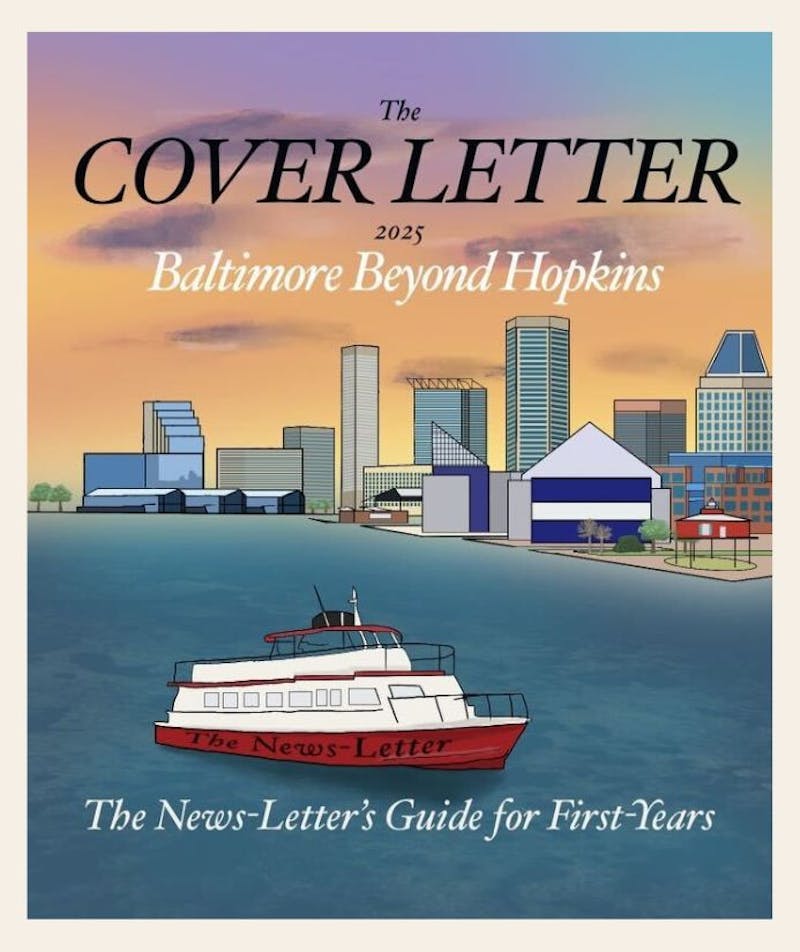When Juliette Saussy learned that Hurricane Katrina would hit New Orleans, she began to pray.
It was not standard procedure for the New Orleans medical director, but the situation was anything but typical.
Like when Saussy had to tell a mother to put her child in a shoebox so she could find the body later.
Or making the tough decision to hang up on a woman after spending 20 minutes on the phone trying to help fix her oxygen tank.
"That haunts me to this day," Saussy said during a speech at Hopkins on Thursday.
At the start of her speech Monday night, Saussy joked that she went into public service for the uniform.
On a more serious note, she added, "When you think about public service, you think, 'what have I done with my life and what have I given back?'"
Since 1984, Saussy has been a member of the city's Emergency Medical Service (EMS).
She went on to become the Chief Medical Officer of Homeland Security and Public Safety in New Orleans, a position she had held for only six months before Katrina struck.
As she began to tell her story, Saussy wanted to make it clear that, "my organization is about one hundred people. Here were some issues with police not showing up. All of my guys showed up."
At 11:00 on the night Katrina hit, her organization of EMTs could no longer respond to 911 calls because ambulances were flooded and hospitals could no longer take patients.
"We shut the system down," she said.
Even though they could not send help, Saussy's group of EMTs continued to answer police dispatch calls through the night. Eventually they lost all communication as telephone and radio lines were submerged in the flooding.
"The only method of communication was swimming or walking. We did a lot of walking," Saussy joked.
With this mass chaos, Saussy described seeing a societal breakdown where "I can take anything I wanted, kill anyone I wanted, and there are no rules."
Prisoners at a maximum security prison had taken over the prison. People in the Superdome had begun to kill each other. Civilians had started shooting at police and EMTs and firemen.
With these news reports and rumors pouring in - many of which later turned out to be false - safety became a concern.
Now those helping needed protection.
"There's nothing scarier than seeing a fireman with a gun," said Saussy as the audience laughed.
More seriously, she explained why she thought these incidents happened. "I don't believe they were shooting at the people who were trying to help them. They were shooting so that people knew where they were," Saussy said.
Throughout this struggle for survival, rescue workers were continually looking for more help and more resources.
Saussy gave a humorous example of this when she showed a picture of a postal truck with EMS scrawled on the side. "I don't even run red lights, but I hotwired a postal truck for EMS," she said.
With their stolen trucks, Saussy and her fellow workers began helping people again from a base at Our Lady of Wisdom Chapel, located in a nursing home.
She was in charge and her workers looked to her for answers. They had almost no supplies and many didn't know if their families were OK.
All Saussy could say was she knew they had food and that they had to do their jobs.
"Part of being a public servant is recognizing your limits as a human being. You don't get magical qualities," she said.
In the end, there was hope, which came in the form of six emergency helicopters that Saussy called "the most glorious sight in the world."
She spoke highly of Lieutenant General Russel Honore, who came to New Orleans and helped coordinate two landing pads so the helicopters could aid in medical assistance.
Soon they began using boats, high-water vehicles and ambulances once again to rescue those in need of medical attention.
Looking back, Saussy felt that the Katrina disaster was as far reaching because there was no decision-making at the time of the crisis.
She outlined the critical mishaps of the event, listing poor communication, no chain of command and no long-term plan as the major problems.
Saussy also stressed the importance of leadership that will make decisions. "There has to be someone in charge," she said.
Her ultimate message was one of inspiration.
"What is it at the end of the day that you want your life to look like? Because if it's for money, glory [or] renown, public service is probably not for you. But if it isn't, I hope you won't let those things deter you," she said.
Saussy was invited to speak by the Institute for Policy Studies as part of their ongoing "Revitalizing Government Services" discussion series. Event co-sponsors included the Center for Public Health Awareness and the Bloomberg School of Public Health.


